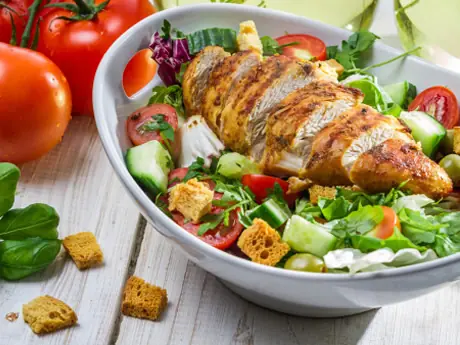
In his classic novel Once a Runner, John L. Parker, Jr. wrote, "If the furnace is hot enough, anything burns, even Big Macs." What he meant was that if a runner trains hard enough, he can eat anything he wants without accumulating excess body fat or harming his performance.
Once a Runner was published in 1978, at the height of the first running boom. Many competitive runners in those days ate whatever they wanted, and took pride in it. The poster boy of the running boom was Bill Rodgers, who won the Boston Marathon and the New York City Marathon four times each between 1975 and 1980. The staples of his diet were mayonnaise, sugary breakfast cereals, chocolate-chip cookies, snack chips, soft drinks and gin-and-tonics.
Old-School Elite's Diet vs. Modern-Day Elite's Diet
Nowadays most elite runners eat far more carefully than Rodgers did. They do so because Parker was wrong. A bad diet negatively affects the body composition and performance of even the hardest-working runners. Sure, it may appear that Rodgers "got away with" his poor diet. But the only way to know for sure would be if Rodgers had improved his diet mid-career. It's possible that, if he had, he would have become even leaner and run even faster. In fact, I think it's likely, because other elite runners who seemed to be getting away with poor diets have made improvements that stimulated fat loss and performance gains.More: Will I Run Faster If I Lose Weight?
One such case is that of Chris Solinsky, who despite eating a couple of frozen pizzas every week while running for the University of Wisconsin, won five individual NCAA titles. With that kind of success, Solinsky had as much reason as any runner to believe that his diet wasn't holding him back one bit. But at 165 pounds, he was heavy for a runner of his caliber, and his consciousness of this fact perhaps made him a little more open to experimenting with stricter nutritional standards than 128-pound Bill Rodgers. After turning professional and moving to Portland, Oregon, to run for Nike, Solinsky cut out the frozen pizzas, started cooking for himself more, and increased his fruit and vegetable intake. Sure enough, he lost a few pounds and took a quantum leap forward as a runner, setting an American record of 26:59 for 10,000 meters in 2010.
More: 6 Weight Loss Power Veggies
Chris Solinsky runs more than 100 miles per week. So if he can't maintain his ideal racing weight without eating carefully, you'd better believe you can't! But here's the good news: While most elite runners today eat very carefully, very few follow restrictive "diets with names" such as the Paleo Diet and the Zone Diet that forbid entire food groups or require that one aim for a very precise balance of carbs, protein and fat. The top runners simply pack their meals and snacks with high-quality foods that are proven to prevent long-term weight gain (specifically: vegetables, fruits, nuts and seeds, lean meats and fish, whole grains and dairy) and limit their consumption of low-quality foods that are known to promote weight gain (specifically refined grains, fatty meats, sweets and fried foods).
How to Copy the Eating Secrets of the Elites
I like to call this approach to diet "agnostic healthy eating." Years of studying the diets of the world's best endurance athletes have shown me that most such high performers take this selective yet flexible and inclusive approach to nourishing their bodies. In my book, The New Rules of Marathon and Half-MarathonNutrition, I created a set of guidelines that enable any runner to easily emulate the pattern of agnostic healthy eating that the elites favor. These guidelines are summarized in the table below.
High-Quality Foods |
Vegetables (including legumes) Fruit Nuts and Seeds Lean Meats and Fish Whole Grains Dairy |
Eat all of these food types. Eat each of these food types more often than any low-quality food type. Try to eat the food types near the top of the list more often than the food types near the bottom. |
Low-Quality Foods |
Refined Grains Fatty Meats Sweets Fried Foods |
Eat each of these food types less often than any high-quality food type. Try to eat the food types near the bottom of the list less often than the food types near the top. |








0 comments:
Enregistrer un commentaire